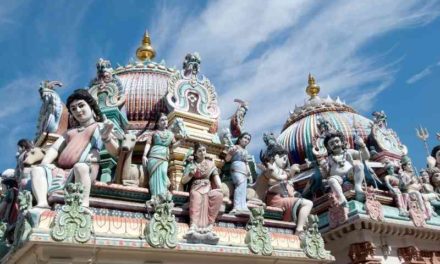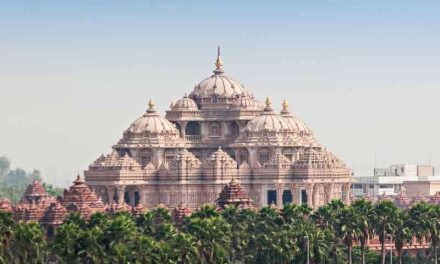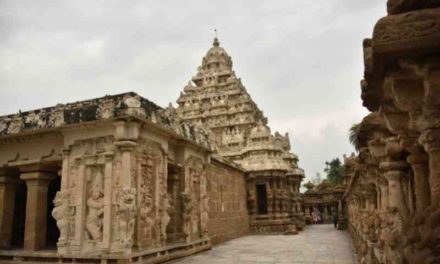Kumbakonam, often referred to as the “Temple Town of Tamil Nadu,” is a place where spirituality, history, and culture come together to create a truly enchanting experience. Among its numerous temples, Adi Kumbeswarar Temple stands out not only for its religious significance but also for its architectural splendor. If you have just one day to spend in Kumbakonam, here’s an itinerary that will help you make the most of your visit, starting with the iconic Adi Kumbeswarar Temple.
Morning: Adi Kumbeswarar Temple – A Divine Beginning
Begin your day with a spiritual awakening at Adi Kumbeswarar Temple. This ancient Shiva temple is not just a place of worship; it’s a historical treasure trove. Located in the heart of Kumbakonam, this temple boasts of impressive Dravidian architecture, intricately carved pillars, and a serene ambiance that will transport you to a different realm.
As you enter the temple, take a moment to admire the grandeur of the Rajagopuram (temple tower) and the beautifully sculpted Nandi (the sacred bull). The sanctum sanctorum houses Lord Shiva in the form of Adi Kumbeswarar and the Goddess Parvati as Mangalambika.
Devote some time to offer your prayers, perform rituals, and experience the divine energy that permeates the temple. Don’t forget to circumambulate the temple’s inner sanctum and explore the various shrines within the complex.
For photographers, Adi Kumbeswarar Temple is a paradise. Every corner of the temple offers a unique and captivating photo opportunity. From the towering gopuram (gateway tower) to the intricate sculptures on the temple walls, there is something for every photographer to capture.
Here are some tips for capturing the beauty of Adi Kumbeswarar Temple:
- Use a wide-angle lens. The wide-angle lens will allow you to capture the entire facade of the temple in a single shot.
- Experiment with different angles. Don’t be afraid to experiment with different angles to find the perfect shot. Try shooting from above, below, or even from the side.
- Pay attention to the details. The temple is full of intricate sculptures and carvings. Take your time to explore the temple and find the details that you find most interesting.
- Use natural light. The best time to photograph the temple is early in the morning or late in the evening when the light is soft and diffused.
- Be respectful. The temple is a sacred place for Hindus, so be respectful of the worshippers and the temple staff.
Here are some specific photo opportunities that you can look for at Adi Kumbeswarar Temple:
- The gopuram: The nine-story gopuram is the most iconic feature of the temple. Be sure to capture the gopuram from different angles to showcase its grandeur.
- The sculptures: The temple walls are adorned with intricate sculptures of Hindu deities and mythological scenes. Take your time to explore the temple and find the sculptures that you find most interesting.
- The Nandi bull: The Nandi bull is the vehicle of Lord Shiva and is often found in Hindu temples. The Nandi bull at Adi Kumbeswarar Temple is particularly large and impressive. Be sure to capture a photo of this magnificent creature.
- The temple interior: The interior of the temple is just as beautiful as the exterior. Be sure to capture the sanctum sanctorum (innermost shrine), the pillars, and the other architectural features.
- The devotees: The temple is often visited by devotees who come to worship Lord Shiva. Be sure to capture the devotion of the worshippers in your photos.
Adi Kumbeswarar Temple is a truly magical place. With its stunning architecture, intricate sculptures, and devoted worshippers, the temple is a photographer’s dream come true. If you have the opportunity to visit this amazing place, be sure to bring your camera and capture its beauty.
Mid-Morning: Breakfast and Refreshments
After seeking blessings at Adi Kumbeswarar Temple, head to one of the local eateries to savor some traditional South Indian breakfast. Kumbakonam is famous for its filter coffee, dosa, idli, and vada. Relish the flavors of the region before continuing your journey.
Late Morning: Sarangapani Temple: A Spiritual Sojourn
Your next stop is the Sarangapani Temple, another architectural marvel located in Kumbakonam. This temple is dedicated to Lord Vishnu and is known for its intricate carvings and beautiful gopurams. The temple’s main deity, Sarangapani (a form of Lord Vishnu), is believed to be the guardian of Kumbakonam.
As you explore this temple, pay attention to the impressive stone carvings that depict various mythological stories and scenes from Hindu epics. The temple’s serene atmosphere and spiritual vibes make it a perfect place for introspection and tranquility.
Lunch: Relishing Local Cuisine
For lunch, indulge in authentic South Indian cuisine at one of Kumbakonam’s local restaurants. Try some of the regional specialties like Chettinadu chicken curry, sambar rice, and traditional sweets like ellurundai and athirasam.
Afternoon: Mahamaham Tank – A Sacred Dip
Post-lunch, visit the Mahamaham Tank, one of the largest temple tanks in South India. This tank holds immense religious significance and is believed to be the spot where all the holy rivers in India converge once every 12 years during the Mahamaham festival. Even if you’re not visiting during the festival, the tank’s tranquil surroundings and the Kasi Viswanathar Temple on its banks make it a serene place to spend some time in reflection.
Late Afternoon: Darasuram Airavatesvara Temple – A UNESCO World Heritage Site
Drive to Darasuram, a small town near Kumbakonam, to explore the Airavatesvara Temple, a UNESCO World Heritage Site. This temple is dedicated to Lord Shiva and is a marvel of Chola architecture. The intricate carvings and sculptures here are nothing short of breathtaking.
Take your time to admire the stunning architecture and explore the temple’s various halls and shrines. The musical steps or “Saptaswara Mandapam,” where each step produces a musical note when tapped, are a unique feature of this temple.
Evening: Shopping for Souvenirs
Before heading back to Kumbakonam, take some time to shop for souvenirs. Kumbakonam is known for its brass and bronze items, silk sarees, and traditional jewelry. Don’t forget to pick up some local handicrafts as a memento of your visit.
Dinner: Traditional Fare
End your day with a delicious dinner at a local eatery, sampling more of the region’s culinary delights. Try some authentic Chettinad dishes or opt for a traditional thali to savor a variety of flavors.
Wrap-Up: A Day of Spiritual Exploration
As the day comes to a close, reflect on the spiritual journey you embarked on in Kumbakonam. From the divine aura of Adi Kumbeswarar Temple to the historical significance of Darasuram Airavatesvara Temple, you’ve experienced a slice of Tamil Nadu’s rich cultural and spiritual heritage. Kumbakonam, with its temples and traditions, promises an unforgettable day of exploration and enlightenment.





